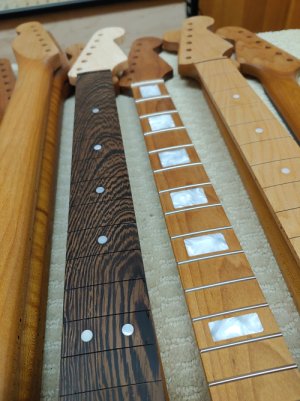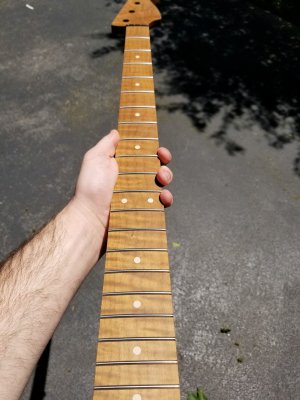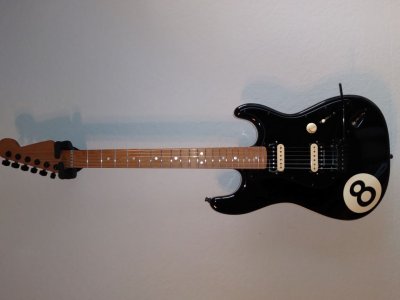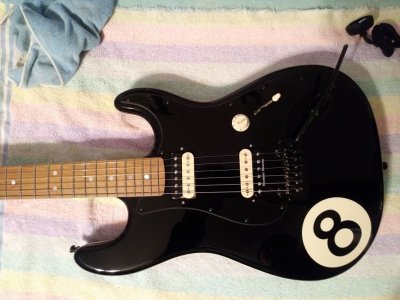StormlitAqua
Newbie
- Messages
- 1
Hi all -
After about a year or so of contemplating, research, and lurking on this forum, I've decided I'm going to be building my first Warmoth guitar pretty soon (already have the body ordered!). However, before I order the neck, I have a few questions that I've been searching around for and can't really find a decent answer to. See below:
1 - Are white/pearl inlays on roasted flame maple necks not advised? The only reason I ask is that almost all of the showroom roasted flame maple necks come with black inlays, and that most of the builds I've seen both on this forum and on google images are with black inlays. In my humble opinion, the lighter inlays look way better on my PC screen, but I haven't seen any of them in person. I know the color of roasted flame maple can change on a neck basis, which only complicates it. If anyone has any pics or recommendations that would be appreciated!
2 - I've seen that its recommended to avoid drilling into roasted maple as much as possible to avoid cracking. Is it recommended that I order a neck with a tiltback headstock design (so I don't need the floyd string bar) and get tuners that don't require any additional "position screws" (on the back) to avoid this? Personally, I want a strat headstock, but if its too much or a risk to drill in the string bar for the floyd or screws to hold straight the tuners, I'd prefer to get a tiltback.
3 - I know that ordering an unfinished neck is A-OK with roasted maple, however, something doesn't sit right with me about this, and unfortunately, I've never played an unfinished neck before. How different is a satin finish from unfinished? Does it require any special care?
Sorry if this is in the wrong section (or if these are stupid questions) and thanks in advance for any help. Super excited to build this guitar. I'll probably start a build thread when the parts arrive! :headbanging:
After about a year or so of contemplating, research, and lurking on this forum, I've decided I'm going to be building my first Warmoth guitar pretty soon (already have the body ordered!). However, before I order the neck, I have a few questions that I've been searching around for and can't really find a decent answer to. See below:
1 - Are white/pearl inlays on roasted flame maple necks not advised? The only reason I ask is that almost all of the showroom roasted flame maple necks come with black inlays, and that most of the builds I've seen both on this forum and on google images are with black inlays. In my humble opinion, the lighter inlays look way better on my PC screen, but I haven't seen any of them in person. I know the color of roasted flame maple can change on a neck basis, which only complicates it. If anyone has any pics or recommendations that would be appreciated!
2 - I've seen that its recommended to avoid drilling into roasted maple as much as possible to avoid cracking. Is it recommended that I order a neck with a tiltback headstock design (so I don't need the floyd string bar) and get tuners that don't require any additional "position screws" (on the back) to avoid this? Personally, I want a strat headstock, but if its too much or a risk to drill in the string bar for the floyd or screws to hold straight the tuners, I'd prefer to get a tiltback.
3 - I know that ordering an unfinished neck is A-OK with roasted maple, however, something doesn't sit right with me about this, and unfortunately, I've never played an unfinished neck before. How different is a satin finish from unfinished? Does it require any special care?
Sorry if this is in the wrong section (or if these are stupid questions) and thanks in advance for any help. Super excited to build this guitar. I'll probably start a build thread when the parts arrive! :headbanging:






